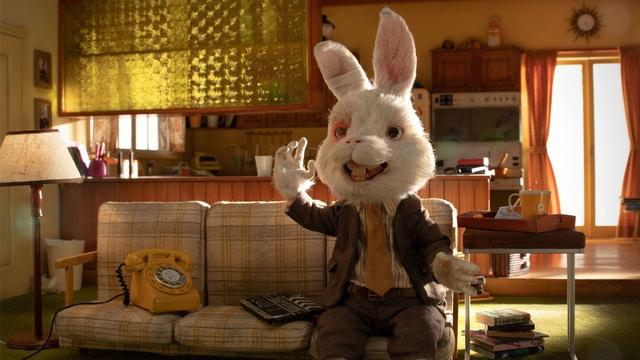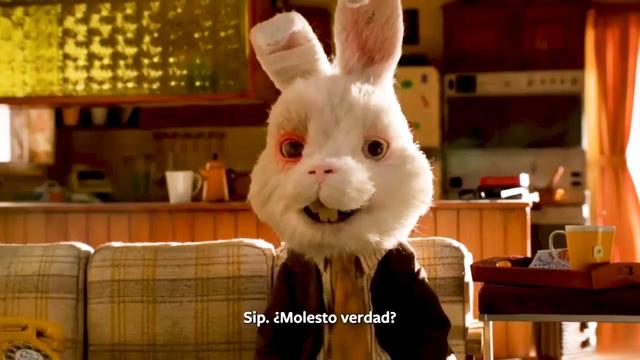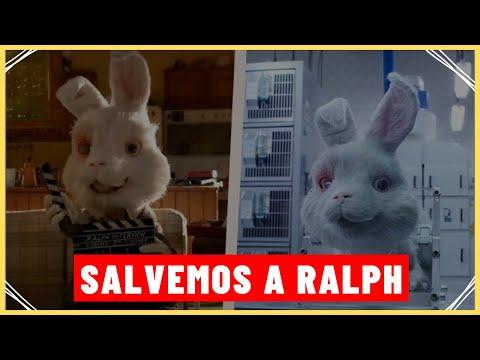Viral Video of Rabbit Sparks Global Outrage: Did it Lead to Lasting Change or Momentary Indignation?
“Discover the viral video sensation of a rabbit that took the internet by storm. Get ready to be amazed as this adorable bunny captivates hearts worldwide with its irresistible charm and antics. Join in on the fun and experience the magic of this must-watch viral phenomenon.”
Background Story of the Viral Rabbit Video: Unveiling Animal Cruelty in the Cosmetics Industry
In April 2021, Human Society International (HSI) released a short film called “Save Ralph” that exposed the harsh reality of animal testing in the cosmetics industry. The film tells the story of Ralph, a rabbit who has suffered various misfortunes as a result of being used for experimental cosmetic testing. Ralph’s story highlights the unnecessary cruelty inflicted upon animals like rabbits, guinea pigs, and mice for products such as lipstick and shampoo.
“Save Ralph” showcases the grim conditions animals endure in laboratories, including Ralph’s loss of vision in one eye, constant ringing in his ears, and burns on his fur. The intention behind the film was to shed light on the hidden world of animal testing and evoke empathy from viewers. With the voices of renowned actors such as Taika Waititi, Zac Efron, and Olivia Munn lending their support to the project, “Save Ralph” garnered global attention and sparked a conversation about animal cruelty in the cosmetics industry.
The Making of “Save Ralph”
- “Save Ralph” was created by HSI in collaboration with award-winning production company Arch Model Studio and director Spencer Susser.
- The film utilized stop-motion animation techniques to bring Ralph’s story to life with realistic detail.
- Famous actors provided their voices for characters in the film, drawing even more attention to its message.
The Impact of “Save Ralph”
The release of “Save Ralph” had a profound impact on viewers around the world. It served as a wake-up call for many who were unaware of the extent of animal cruelty involved in cosmetics testing. The emotional portrayal of Ralph’s suffering struck a chord with audiences and prompted widespread outrage and calls for change.
The viral nature of the video allowed it to reach a vast audience, including individuals who may not have been previously aware of the issue. Social media platforms played a significant role in spreading the video, with users sharing it across various channels, amplifying its message and expanding its reach.
The Impact of the Viral Rabbit Video: Raising Awareness on Animal Cruelty in Cosmetics
The release of “Save Ralph” had a profound impact on viewers around the world. It served as a wake-up call for many who were unaware of the extent of animal cruelty involved in cosmetics testing. The emotional portrayal of Ralph’s suffering struck a chord with audiences and prompted widespread outrage and calls for change.
The viral nature of the video allowed it to reach a vast audience, including individuals who may not have been previously aware of the issue. Social media platforms played a significant role in spreading the video, with users sharing it across various channels, amplifying its message and expanding its reach.
Raising Awareness Through Social Media
- Viewers took to social media platforms such as Twitter, Facebook, and Instagram to express their shock and anger over animal testing in the cosmetics industry.
- Hashtags like #SaveRalph and #CrueltyFreeCosmetics trended globally, creating further visibility for the cause.
- Influencers and celebrities also joined the conversation by sharing their thoughts on the video and encouraging their followers to support cruelty-free beauty products.
Media Coverage and Public Discussion
“Save Ralph” received extensive coverage from mainstream media outlets worldwide. News articles, television segments, and interviews with HSI representatives helped keep the issue in the public eye and encouraged further discussion.
The video spurred debate and conversation about the need for stricter regulations on animal testing in the cosmetics industry. Consumers, beauty brands, and advocacy groups all contributed to the dialogue, pushing for change at various levels of society.
Actions Taken Against Animal Testing in the Beauty Industry Following the Viral Rabbit Video

After the release of the viral rabbit video, there has been a significant increase in activism and action taken against animal testing in the beauty industry. Many organizations and consumers have demanded change and pushed for cruelty-free alternatives. As a result, several countries, including the European Union, India, Israel, and Norway, have implemented bans on animal testing for cosmetic products.
In addition to government regulations, many beauty companies have also made commitments to end animal testing. They have pledged to only use ingredients that are proven safe without animal testing and to support alternative testing methods such as in vitro and computer modeling. Some companies have even obtained certifications from organizations like Leaping Bunny or PETA’s Beauty Without Bunnies program to showcase their commitment to cruelty-free practices.
Moreover, consumer awareness and demand for cruelty-free products have played a crucial role in driving change. People are increasingly choosing to purchase cosmetics from brands that do not test on animals. This has incentivized companies to reformulate their products and find innovative ways to ensure product safety without causing harm to animals.
Despite these positive changes, there is still work to be done. Animal testing remains prevalent in certain regions, and some companies may still engage in these practices under certain circumstances. Continued advocacy and support for cruelty-free alternatives are necessary to fully eradicate animal testing from the beauty industry.
Progressive Legislation: Bans on Animal Testing
One significant development following the viral rabbit video is the implementation of progressive legislation banning animal testing in the beauty industry. Countries such as the European Union, India, Israel, and Norway have enacted comprehensive bans on animal testing for cosmetic purposes. These bans demonstrate a shift towards more ethical practices within the industry.
Certifications and Labels: Identifying Cruelty-Free Brands
To meet the growing demand for cruelty-free products, organizations like Leaping Bunny and PETA’s Beauty Without Bunnies program have developed certifications and labels. These certifications help consumers identify brands that are committed to cruelty-free practices. By choosing products with these labels, consumers can actively support companies that prioritize the well-being of animals.
Consumer Response to the Viral Rabbit Video: Influencing Purchasing Decisions in the Beauty Industry

The release of the viral rabbit video has had a profound impact on consumer purchasing decisions in the beauty industry. The graphic portrayal of animal testing in the video sparked outrage and empathy among viewers worldwide, leading many consumers to reevaluate their choices and seek out cruelty-free alternatives.
As consumer awareness about animal testing has increased, so too has demand for ethical and sustainable beauty products. People are now more conscious of the consequences of their purchases and are actively seeking out brands that do not test on animals. This shift in consumer behavior has prompted many companies to reformulate their products or create new lines that are cruelty-free.
In response to this demand, retailers and online platforms have also taken steps to make it easier for consumers to find and purchase cruelty-free products. Many beauty retailers now feature dedicated sections or filters specifically for cruelty-free options, allowing shoppers to make informed choices aligned with their values.
Furthermore, social media platforms have played a significant role in amplifying consumer concerns about animal testing. Influencers and beauty bloggers often share information about cruelty-free brands and advocate for ethical practices within the industry. This collective effort from consumers, influencers, and retailers has contributed to a positive change in the beauty industry’s approach towards animal testing.
The Rise of Conscious Consumerism
The viral rabbit video served as a wake-up call for many consumers, highlighting the need for more ethical practices in the beauty industry. As a result, there has been a rise in conscious consumerism, where individuals actively consider the social and environmental impact of their purchasing decisions.
Educational Campaigns and Awareness
Various educational campaigns and awareness initiatives have emerged following the viral rabbit video. These campaigns aim to inform consumers about the reality of animal testing in the beauty industry and encourage them to choose cruelty-free products. Through social media, online platforms, and community events, these initiatives have helped raise awareness and empower consumers to make more ethical choices.
Progress in Cruelty-Free and Environmentally-Friendly Beauty Products Post-Viral Rabbit Video
The viral rabbit video has had a significant impact on driving progress in the development and availability of cruelty-free and environmentally-friendly beauty products. The graphic portrayal of animal testing sparked a global outcry for alternatives that do not involve harming animals or damaging the environment.
As a result, many beauty companies have prioritized research and development into innovative methods that eliminate the need for animal testing. They are investing in technologies such as in vitro testing, tissue engineering, 3D printing, and artificial intelligence to ensure product safety without compromising on animal welfare.
Furthermore, there has been a growing emphasis on creating environmentally-friendly beauty products. Brands are implementing sustainable packaging solutions, reducing waste through recycling programs, and using natural and organic ingredients sourced ethically. This focus on sustainability aligns with consumer demand for products that not only prioritize animal welfare but also minimize their environmental footprint.
Innovation in Alternative Testing Methods
The viral rabbit video served as a catalyst for increased investment in alternative testing methods within the beauty industry. Companies are exploring cutting-edge technologies like tissue engineering, which involves growing human cells that mimic the structure and function of organs to test product safety. This approach provides accurate results without subjecting animals to harm.
Sustainable Packaging Solutions
In response to consumer demand for environmentally-friendly practices, many beauty companies are adopting sustainable packaging solutions. They are utilizing recyclable materials, minimizing plastic usage, and exploring innovative packaging designs that reduce waste. These initiatives help minimize the industry’s impact on the environment and promote a more circular economy.
Companies Embracing Cruelty-Free Practices: Examples of Change Inspired by the Viral Rabbit Video

The release of the viral rabbit video has prompted several beauty companies to embrace cruelty-free practices and make significant changes in their product formulations and testing methods. This shift towards cruelty-free alternatives is a direct result of consumer demand and increased awareness about animal testing.
Many well-known brands have made public commitments to end animal testing and have taken steps to obtain cruelty-free certifications. For example, companies like Lush, The Body Shop, and Urban Decay have long been advocates for cruelty-free products and actively campaign against animal testing. Their commitment to ethical practices has inspired other companies to follow suit.
Furthermore, some beauty conglomerates have acquired or partnered with cruelty-free brands to expand their offerings in response to changing consumer preferences. By incorporating these brands into their portfolios, they are able to cater to a broader range of customers who prioritize ethical choices.
Collaborations with Animal Rights Organizations
In order to further support cruelty-free practices, several beauty companies have collaborated with animal rights organizations. These partnerships aim to raise awareness about animal testing in the industry and develop new solutions that eliminate the need for such practices. By working together, companies and organizations can drive meaningful change and create a more compassionate future for the beauty industry.
The Influence of Celebrity Endorsements
Celebrity endorsements have also played a significant role in encouraging companies to embrace cruelty-free practices. Influential individuals in the entertainment industry use their platform to advocate for ethical choices within the beauty industry. Their support not only raises awareness but also inspires consumers to choose cruelty-free products.
Supporting Ethical and Sustainable Practices in the Cosmetics Industry: Steps Inspired by the Viral Rabbit Video
The release of the viral rabbit video has motivated various stakeholders in the cosmetics industry to take steps towards supporting ethical and sustainable practices. From consumers to beauty companies and regulatory bodies, there is a collective effort to create positive change and prioritize animal welfare.
One significant step taken is the increased collaboration between brands and animal rights organizations. By working together, they can develop guidelines, standards, and certifications that promote cruelty-free practices. These collaborations ensure transparency and accountability within the industry, ultimately benefiting both consumers and animals.
Furthermore, governments are implementing stricter regulations to enforce cruelty-free standards. They are encouraging companies to adopt alternative testing methods through incentives or penalties for non-compliance. This regulatory support helps create a level playing field for all beauty brands and promotes a more ethical approach to product development.
Additionally, consumer education initiatives have been launched to raise awareness about animal testing in the cosmetics industry. Through educational campaigns, people are encouraged to make informed choices and support brands that prioritize animal welfare. By empowering consumers with knowledge, these initiatives drive demand for cruelty-free products and compel companies to adjust their practices accordingly.
Collaboration Between Brands and Animal Rights Organizations
Collaboration between brands and animal rights organizations has been instrumental in driving change in the industry. Through joint efforts, they can advocate for legislation changes, share best practices, and educate consumers about cruelty-free alternatives. This collaborative approach ensures a comprehensive effort towards creating an ethical and sustainable cosmetics industry.
Government Regulations: Promoting Ethical Practices
Governments play a crucial role in promoting ethical practices in the cosmetics industry. By implementing strict regulations on animal testing and incentivizing cruelty-free alternatives, they create an environment that encourages companies to prioritize animal welfare. These regulations provide clear guidelines for businesses to follow while also protecting consumer interests.
Overall, the viral rabbit video has sparked a global movement towards ethical and sustainable practices in the cosmetics industry. Through a combination of consumer demand, company commitments, and regulatory support, positive change is being driven to protect animals and promote a more compassionate approach to beauty.
In conclusion, the viral video of the rabbit has captivated viewers worldwide. Its adorable antics have brought joy and laughter to millions, showcasing the power of social media in spreading happiness. This viral sensation reminds us of the simple pleasures that can brighten our day, even in the midst of challenging times.
